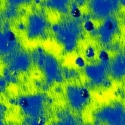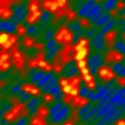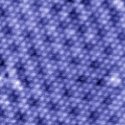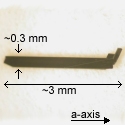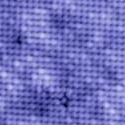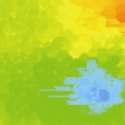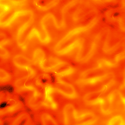Correlated Electron Materials
The last few decades have seen the discovery of materials with exotic properties few would have imagined. Superconductors exhibit zero resistivity up to 135 Kelvin. Multi-ferroic materials allow a magnetic field to write electric domains and an electric field to write magnetic domains. Colossal magnetoresistance materials change their electrical conductivity by orders of magnitude upon application of a magnetic field. Heavy fermion materials host electrons which behave thousands of times heavier than their actual mass, whereas the electrons in graphene behave as if they were massless. Existing materials display fractional charges in two dimensions, and the recently discovered topological insulators may extend these fractional charges into three dimensions.
These diverse behaviors all trace to electron interactions. In conventional metals, electrons barely interact with each other: Fermi liquid theory describes their tendency to screen local charge, so that electrons can be treated as isolated particles in a homogenous background. In contrast, the common feature to all of these exotic materials is that their electrons do interact, and we lack broadly successful theoretical language to describe these 'correlated electron materials'.
The Hoffman Lab uses novel high resolution scanning probe imaging techniques to improve understanding and control of this new generation of exotic 'correlated electron' materials.
Zoology

Many of the above exciting materials are in fact members of whole families of similar materials, often with complex, multi-element chemical formulas. Unfortunately, the complexity of the chemical formulas and the subtle similarities & differences in properties within families can make the entire subject impenetrable to outsiders. We are working on clarifying some of these materials by providing both lay introductions to each family, and tables of relevant properties for experts. This effort is funded by the NSF CAREER grant DMR-0847433.
